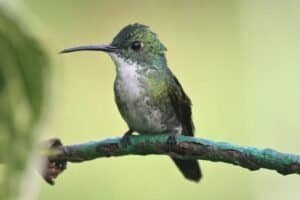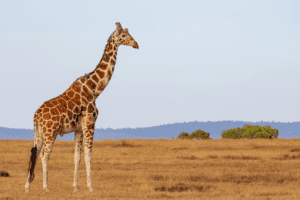How Do Hummingbirds Help Flowers. Hummingbirds are one of nature’s most fascinating creatures. These tiny, colorful birds are known for their unique ability to hover in place and fly backwards, as well as their incredible speed and agility.
But did you know that hummingbirds also play a crucial role in pollination and plant reproduction? In this article, we will explore the ways in which these beautiful birds help flowers and contribute to the health of our ecosystem.
Table of Contents
How Do Hummingbirds Help Flowers? The Amazing World of Hummingbirds
Hummingbirds are not only important for flowers and the ecosystem, but they are also incredibly fascinating creatures that have captured our imagination for centuries. With their incredible speed and agility, unique physical adaptations, and vibrant colors, it’s no wonder why people are so enchanted by these birds. From their ability to hover in place to their impressive migration patterns, hummingbirds continue to amaze and inspire us.
What do hummingbirds eat?
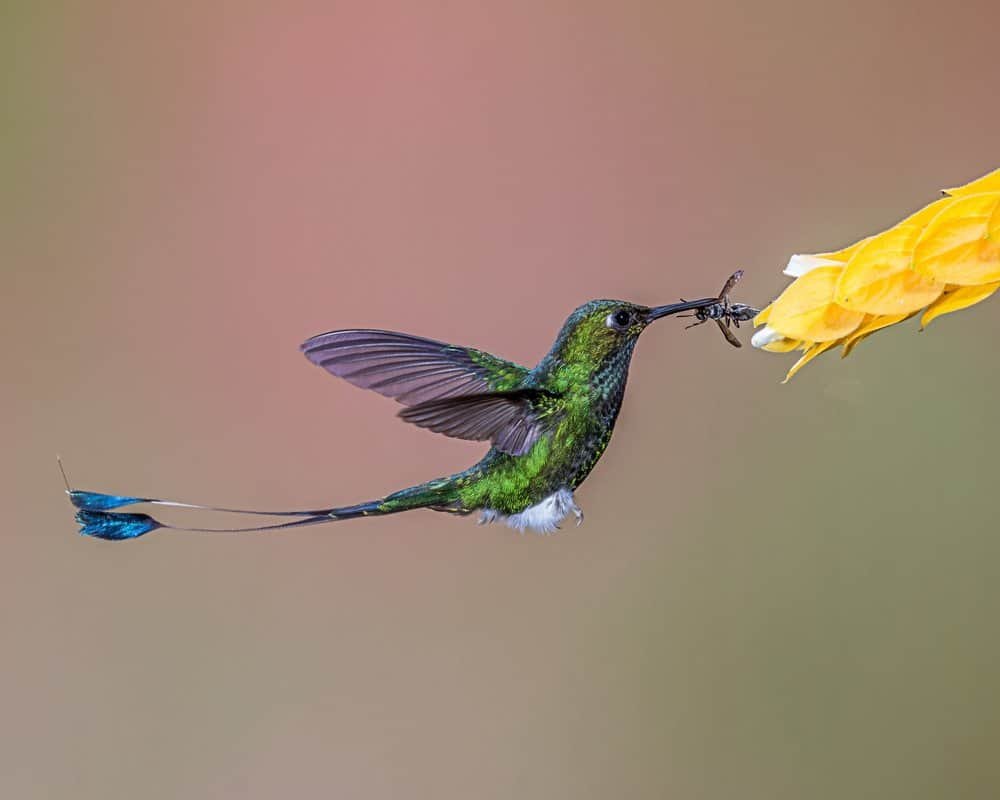
Hummingbirds have a very specific diet consisting mostly of insects for protein and nectar from flowers. Their nutritional choices are tailored to their high-energy lifestyle and quick metabolism, which keeps them healthy and able to maintain their amazing flying abilities. Here’s a more thorough breakdown of what foods hummingbirds consume.
Hummingbirds get most of their carbs from nectar. They use their long, specialized bills and extensible, tube-like tongues to reach deep into the blossoms in order to sip on the sweet nectar of various flowers. The energy required for their quick wing beats, hovering, and other activities is supplied by the nectar.
Insects: Hummingbirds need protein for muscle growth and general health, even if nectar meets their energy demands the most. They get this protein by eating spiders, tiny insects, and occasionally even spider silk that they can use to make nests. Hummingbirds hunt with great agility, catching insects in the air or removing them from webs and leaves.
Ripe fruits and berries are occasionally consumed by hummingbirds, though they are not their main food source. These can supplement their diet with extra vitamins and minerals.
Hummingbirds can also eat gum and resin from trees and plants, in addition to sap. These compounds can help with digestion and provide additional nutrients.
Flowers That Attract Hummingbirds
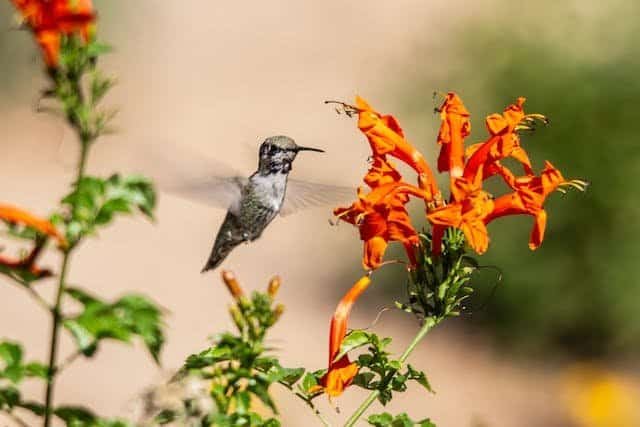
If you’re interested in attracting hummingbirds to your garden, there are many flower options that they love. Some popular choices include honeysuckle, bee balm, columbine, salvia, and petunias. These flowers have bright colors and produce copious amounts of nectar, making them irresistible to hummingbirds.
By planting a variety of these flowers in your garden, you can create a beautiful and inviting space for these birds to visit. Additionally, consider avoiding the use of pesticides and insecticides, as they can be harmful to hummingbirds and other pollinators. Hummingbirds are truly remarkable creatures that deserve our admiration and protection.
By understanding their role in pollination and taking steps towards creating a healthy environment for them, we can help ensure their survival and the continuation of their important work in our ecosystem. So let’s continue to appreciate and learn about these amazing birds, and do our part in preserving their place in nature.
Mastering the Art of Attracting Hummingbirds

Hummingbirds are attracted to bright, tubular-shaped flowers with a high nectar content. This is because their long, narrow beaks are perfectly adapted for reaching deep into these types of flowers. These birds also have a strong preference for brightly colored flowers, particularly shades of red, orange, and pink.
These colors are easier for them to see, and they often associate them with a plentiful nectar supply. So, if you want to attract hummingbirds to your garden, be sure to plant a variety of flowers that meet these criteria.
What is the relationship between hummingbirds and flowers?
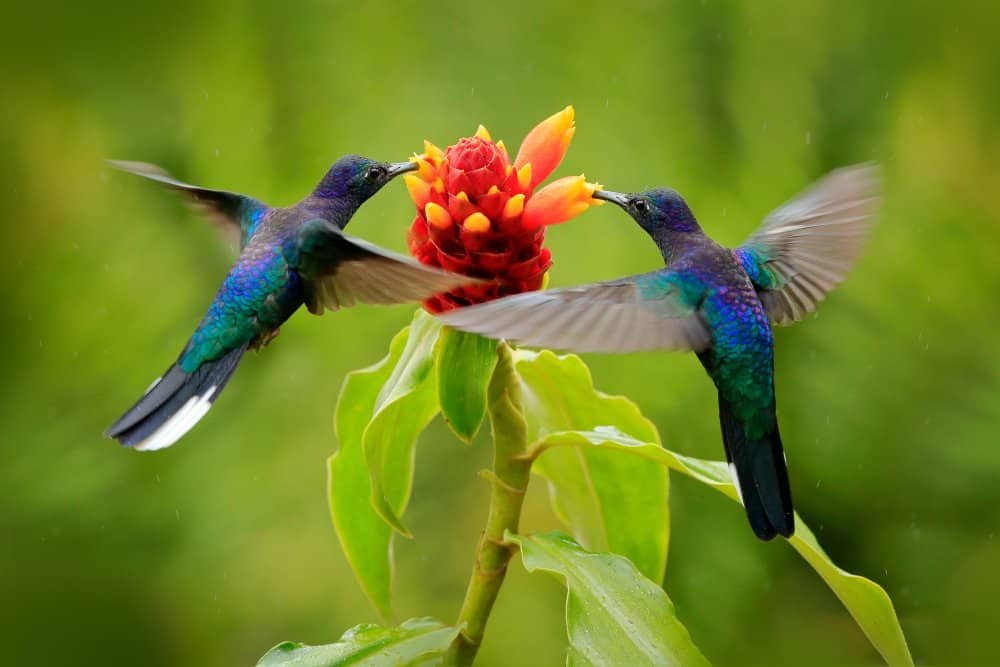
The relationship between hummingbirds and flowers is a mutually beneficial one. Hummingbirds rely on the nectar from flowers as their primary food source, while flowers depend on hummingbirds for pollination.
As these birds feed on the nectar of flowers, they inadvertently transfer pollen from one flower to another, allowing for cross-pollination and reproduction. This process is essential for the survival of many plant species.
How to Protect Hummingbirds and Blossoms?

As with all species in our ecosystem, it is crucial to protect both hummingbirds and flowers. Hummingbirds are particularly vulnerable to habitat loss, pollution, and the use of pesticides and insecticides. These factors can harm or even kill these birds, ultimately impacting the health of our environment.
By creating a welcoming habitat for hummingbirds with a variety of nectar-rich flowers and avoiding harmful chemicals, we can help ensure their survival.
The Remarkable Adaptations of Hummingbirds for Efficient Pollination
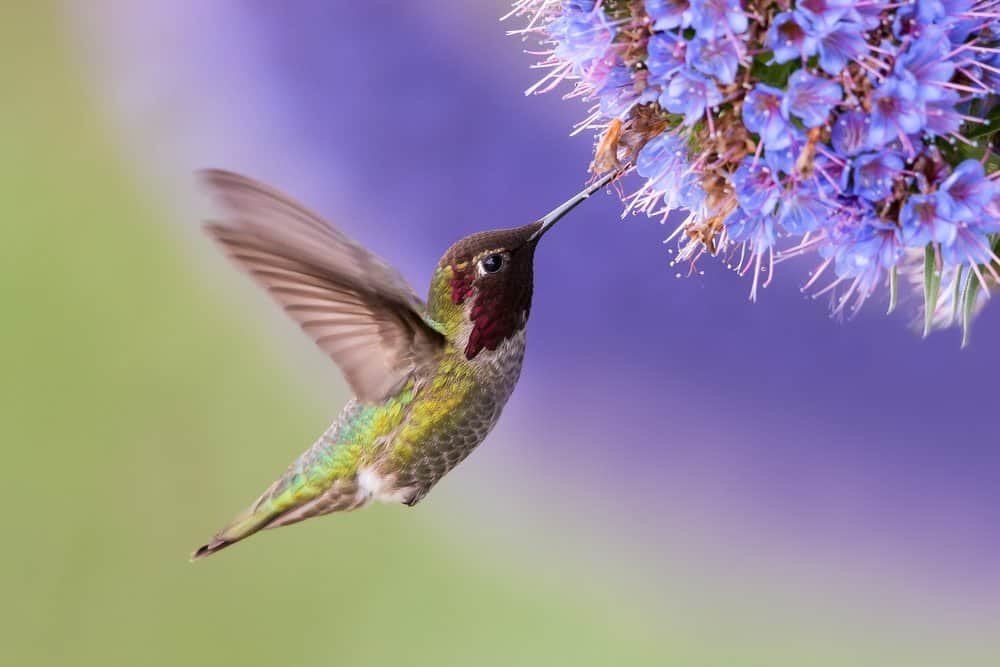
Hummingbirds play a vital role in pollination as they visit numerous flowers each day, carrying pollen from flower to flower. Unlike bees, who collect and transport pollen on their bodies, hummingbirds have feathers that do not easily hold onto pollen. As a result, they have developed unique adaptations to ensure efficient pollination.
Their long, curved beaks and brush-like tongues are perfectly designed to reach deep into flowers and extract nectar, while their rapid wing beats cause vibrations that help release pollen from the flower’s anthers. This makes them highly effective pollinators, with some species even playing a crucial role in the reproduction of certain plants.
How Do Hummingbirds Pollinate?
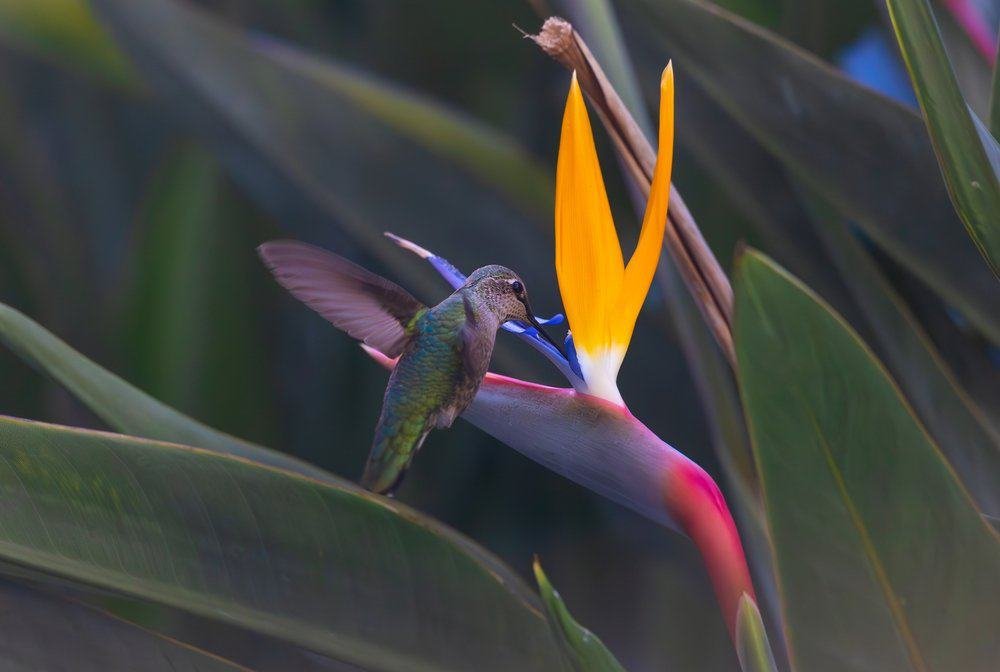
This fertilization process enables plants to produce seeds and fruits, which are essential for their reproduction and survival. Without pollinators like hummingbirds, many plant species would not be able to reproduce and would eventually die out. This, in turn, would have a major impact on the entire ecosystem, as plants are a vital source of food and shelter for many other animals.
Hummingbirds pollinate flowers in two main ways: by using their long beaks to reach deep into the flower and collect nectar, and by brushing against the stamen (the male reproductive organ) as they feed.
When the hummingbird visits another flower of the same species, the pollen from its feathers or beak is transferred to the stigma (the female reproductive organ), completing the pollination process.
Some flowers have co-evolved with hummingbirds to ensure that their pollen attaches to the birds’ beaks or feathers in a specific way, maximizing the chances of successful pollination.
Healthy Environment and the Hummingbirds
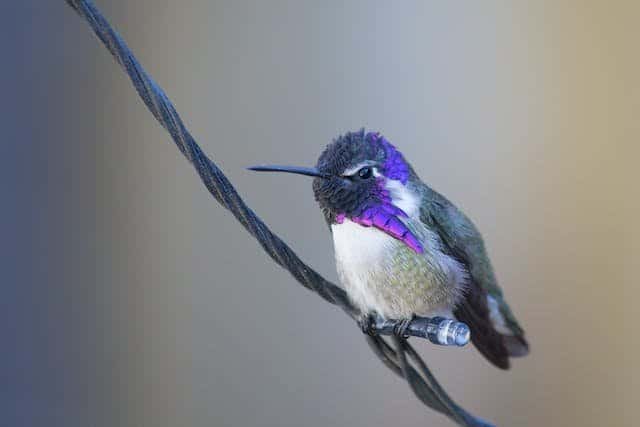
By understanding the connection between hummingbirds and flowers, we can gain a better appreciation for the importance of preserving our environment. In today’s world, it is more important than ever to take steps towards sustainability and conservation.
By creating a welcoming habitat for hummingbirds, we are not only helping these birds thrive but also contributing to the overall health of our planet. So let’s continue to learn and educate others about the vital role hummingbirds play in our ecosystem.
Together, we can make a positive impact and ensure a healthier future for all living beings. So go ahead and plant some bright, tubular-shaped flowers today to attract these delightful birds and contribute to the health of our environment.
The Survival diet of hummingbird in the environment
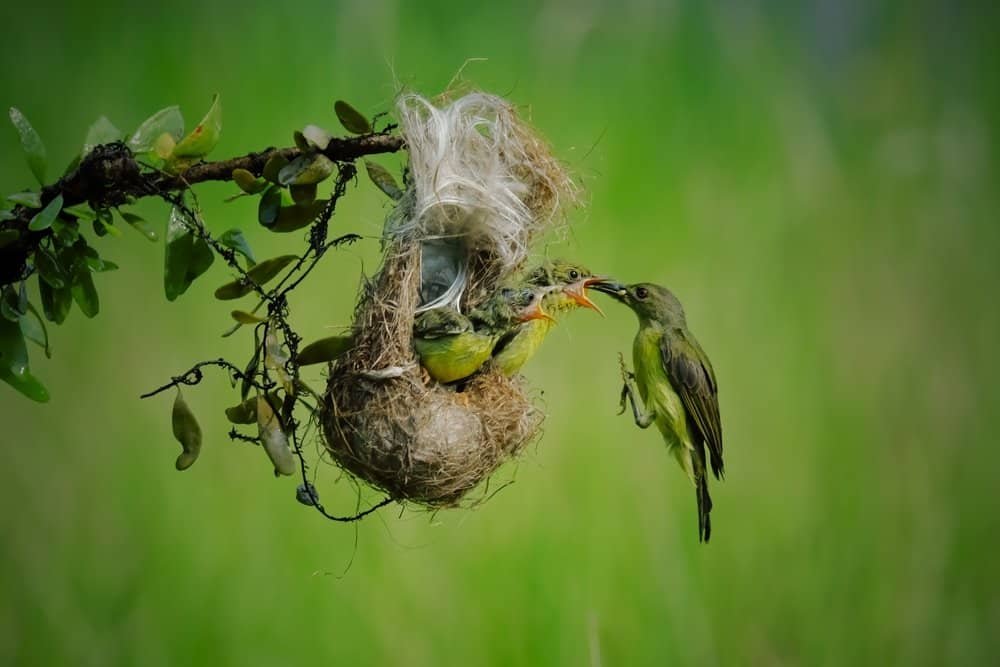
Hummingbirds have a high metabolism and need to consume vast amounts of nectar to support their energy needs. In fact, they can consume up to twice their body weight in nectar each day!
They also supplement their diet with insects and spiders, providing them with protein and other essential nutrients. This unique survival diet showcases the adaptability of hummingbirds and their ability to thrive in diverse environments.
By providing a variety of food sources in our gardens, we can help ensure that these birds have access to the nourishment they need to survive and continue pollinating. So let’s remember to not only plant nectar-rich flowers but also create a welcoming habitat for insects and spiders as well.
Hummingbirds and Flowers Have a Fascinating Relationship

Hummingbirds and flowers have a fascinating relationship that highlights the intricate balance of our ecosystem. These beautiful birds play a crucial role in pollination, helping to ensure the reproduction and survival of many plant species. By understanding and appreciating their importance, we can take steps to protect these precious creatures and the flowers they rely on for sustenance.
So next time you see a hummingbird fluttering around your garden, take a moment to appreciate the vital role they play in keeping our world blooming and thriving. So go ahead and plant some bright, tubular-shaped flowers today to attract these delightful birds and contribute to the health of our environment.
So go ahead and plant some bright, tubular-shaped flowers today to attract these delightful birds and contribute to the health of our environment. Happy gardening! So go ahead and plant some bright, tubular-shaped flowers today to attract these delightful birds and contribute to the health of our environment.
Read Also: Do Hummingbirds Eat Bees


